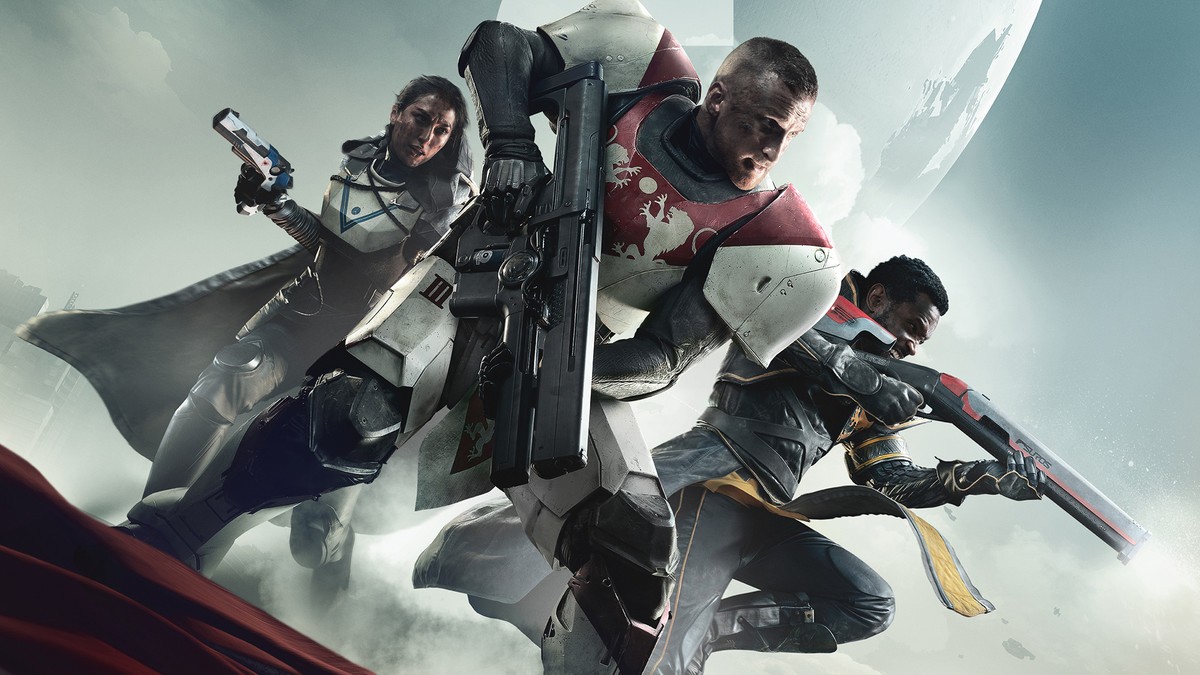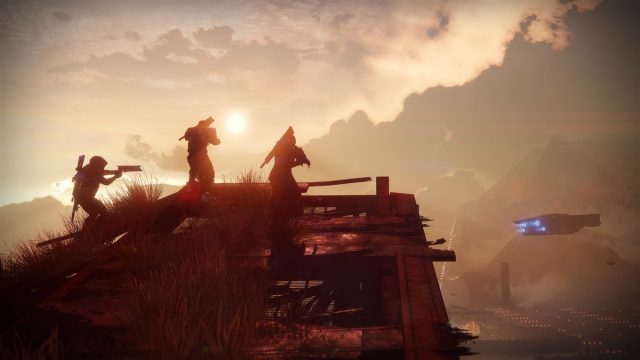
Three years have passed since the original Destiny released, bringing with it lots of promises, including that of a ten year plan. However, as we all know, the ambitious new IP from Halo creator Bungie and publishing giant Activision debuted to mixed reviews, with some loving it and many others labeling it as being decent but unspectacular.
Now, fast forward to today, where Destiny 2 is in our hands and is also widely available both at retail and online. Promising a more in-depth campaign, improved gameplay and a wealth of added content far surpassing that of its predecessor, it’s also arrived with lots to live up to. The good news, though, is that this sequel delivers and does so in visceral fashion.
Destiny 2 — which is once again an online focused and mostly cooperative experience — begins with a bang, as a new threat emerges and quickly causes all Hell to break loose. Known as the Red Legion, its sights are set on harnessing the power of the Traveler. The scariest part of it all, though, is the sect’s resume, which is full of wanton destruction, including that of other innocent planets. Earth is their new target, you see, and if we Guardians don’t step up and save the day our planet may not remain intact for much longer.
Led by a large, ugly brute named Dominus Ghaul, the Red Legion have employed the use of machinery to ensnare the Traveler and block its light. What results is pure pandemonium, as the Guardians and those who ally with them find that their light has been distinguished, perhaps for good. In fact, it’s only the player’s chosen and created hero who ends up getting its light back soon after the event, allowing him (or her) to use their powers in attempted retaliation. Thus, one Guardian assumes the hopes, dreams and livelihood responsibilities for everyone else, and must do whatever is necessary in order to put an end to Ghaul’s torment. Or die trying.
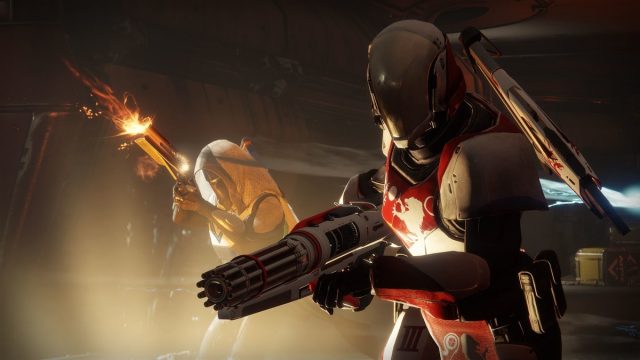
Whereas the original game had a short and middling campaign, most of which I’ve honestly forgotten by now, Destiny 2 is a different beast. It’s a night and day kind of change, too, because the campaign found here is not only thoroughly enjoyable, but also quite beefy. In fact, unless you do your best to rush and speed run your way through it, you should get at least ten hours out of its missions, if not more. Although I didn’t track my own time, I’d say that it took me a good 11-12 hours to finish, give or take a bit. Granted, this isn’t counting the time spent doing public events and other types of missions in order to level up in-between.
Destiny 2‘s campaign may begin on Earth, but it spans the course of several different planets, before ending on a space vehicle. Each of these planets then becomes a hub, wherein players can explore or take on different types of side quests at will. This is one of the best things about the game, as it provides a gigantic game world for players to both explore and shoot up.
Don’t expect things to be easy, either, because there are times where the missions are almost too challenging for their own good. This can lead to some frustration, as it begins to feel like the game’s co-op emphasis overshadowed its developer’s care for single players a bit. Past the half-way mark, there are a couple of engagements against bosses that are best described as bullet sponges. Enemies that are both gigantic and powerful, with one taking the form of a giant robot who’s regularly buffed and shielded by groups of lesser baddies. This particular fight wasn’t all that fun, because it expects too much from the player and stretches a single player’s limits too far.
Relating to this concern is the game’s power level system, which is judged using the player’s individual level, armor status and weapon power. While many RPGs tend to have level requirements, Destiny 2 places suggested power levels beside each of its missions and optional engagements. A word to the wise, though, is to always add at least ten to what you see, because if something says 160, it’s going to be tough even if you’re at that level. You’d be better off waiting until you’re power level 180, or at least 170 to 175.
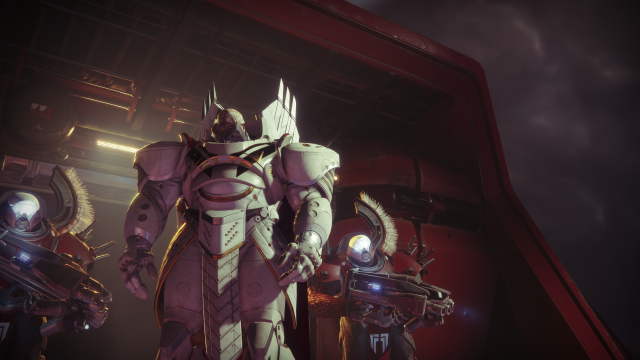
Improving one’s power level is as easy as picking up new gear, be it a better helmet or chest plate, or even some new boots. That said, if you prefer to use a certain weapon and avoid switching to ones with better ratings then it’ll be detrimental to that cause. Thankfully, though, the game doesn’t punish you for using what you’d like to, so long as you make sure to level up enough between missions and read the suggested ‘requirements’ before entering into battle.
What’s good about this general set-up is that there’s lots to do in-between each mission, including the aforementioned public events. These engagements — which appear often — take place throughout the game world, with one or two always being on the go on each planet, or so it seems. You won’t always have allies to aid you, though, because there will be times where you’ll happen upon a public event and find that you’re the only one who’s there. And, perhaps, the only one who really cares at that point in time.
Some of the public events could be done solo, but it’s a difficult task. They usually involve fighting against a large assortment of enemies, all while trying to accomplish a certain task, like disabling drilling equipment or keeping the enemy from getting to certain items. This means lots of gunfire, and quite a few powerful foes to deal with.
What’s interesting about these events is that they can be modified. By completing different side objectives (one per each type of event) you’ll change the skirmish into a heroic public event, which not only makes things more difficult but also improves the rewards you’ll receive upon completion. A good example of this is the drilling one, which can be turned heroic by destroying small machines that appear at each of the few drilling sites.
Adventures are the other new mission type, and they’re definitely worth writing home about. That’s because, in addition to being plentiful, these side objectives are also pretty well fleshed out, making them much more like side quests than busywork. While some of the objectives do repeat (like killing a set amount of enemies in order to pick up dropped items), they all usually offer something different, with some being quite engaging. What’s best about them, though, is how they flesh out the story, because you’re always doing something to help the cause, and the objective is always given by one of your allies. Said allies talk during the missions, and add depth to the story through their dialogue.
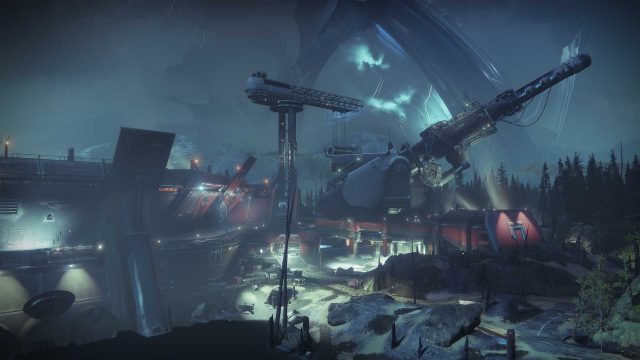
Some of these adventures really stand out for what they offer, especially those given by Failsafe, an artificial intelligence who provides lots of great comic relief. She has some excellent dialogue, as does Cayde-6, although the others’ is generally of quality as well.
Of course, as mentioned before, what draws most players to Destiny is the endgame content, which is made up of things like cooperative raids and strikes. Destiny 2 is far from a slouch here, and has quite a bit to offer, although the majority of its raids are still to come. Granted, you’ll need to have a good strike team that you trust in order to tackle those if you wish to complete them victoriously, because they’re difficult and demanding, which is probably what draws people to them most outside of the loot. After all, bragging rights can be big in this type of game.
The strikes are less demanding and are easier to get into. They’re also more plentiful, which is appreciated. You’ll find them on a planet nestled behind the Crucible, which acts as the game’s competitive multiplayer hub.
Strikes task players with a common objective as well, but they’re definitely not as difficult. Also, unlike the raid, you don’t need to have an incredibly high power level in order to compete. I was able to get into a good strike with ease, and while it was fairly challenging, myself and the two others that I played with were able to beat it without much difficulty. It was all about the end goal, as we made our way through a familiar base (which I’d seen in the campaign), en route to taking down a big bad boss who loved to send his minions after us while also using shields to protect himself. It was fun, engaging and immersive, and was never too easy or too difficult.
Of course, it’s all level based.
Speaking of the Crucible, it’s important to note that things are now four-on-four, which is different than the six-on-six PVP that the original game boasted. It’s definitely a change, and something that takes some time to get used to, but it fits most of the sequel’s new maps and modes. You will find lots of empty space in some, though, and may wish that the change never occurred. Others will love the smaller teams, though, so to each their own I guess.
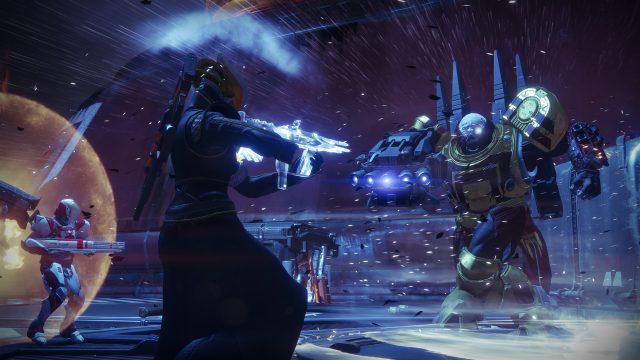
The Crucible’s PVP is available in two flavours, low intensity and high intensity, and to distinguish between the two Bungie has presented two separate matchmaking queues. However, while one is supposed to be more challenging than the other, that isn’t always the case. What you will find, though, is that the lower intensity one takes less time to find matches with than its high intensity peer. It’s likely because the latter is more level based.
For the most part, the PVP is very solid. It’s immersive, fun and challenging. Things aren’t perfect, though, and to be honest I personally miss the multiplayer from the first Destiny. That said, this one is still good and I can see myself putting a decent amount of time into it. I’ll need to get better in order to compete, though, because people already seem to be quite a bit better than me on average. Then again, that’s usually the case given that I tend to prefer losing myself in various single player games, as opposed to regularly playing one game’s multiplayer. Or multiplayer in general.
Unsurprisingly, there’s more to this experience than just the above, even in terms of endgame modes. You’ll also find Lost Sectors, which are hidden areas that boast challenging enemies to battle against and earn rewards from; one-time World Quests that appear on each planet; Nightfalls which make a return and allow you to earn high leveled gear; weekly rewards and reputation facets. You see, by collecting different items — such as elements that are native to individual planets — you can increase your reputation with different NPCs and also earn big rewards in the form of engrams. These can be decrypted and used, or dismantled for parts.
When you’re not interested in shooting things you can head to the Farm, which acts as Destiny 2‘s main hub, taking over from the space station that served as the first one’s meeting area. A newly set-up safe haven, it’s where humanity has moved to after losing its home and its beloved Traveler to the Red Legion at the start of the story.
The Farm is a good place to meet others, but then again so are public events or strikes with random matchmaking. Its best asset, though, is being a place where you can look after all of your buying, selling or converting needs.
Destiny was always a game about loot, and Destiny 2 is very much the same. In fact, it’s even more loot heavy, and there’s lots to find, collect, trade and buy. Engrams and shaders for weapons are the most sought after, it seems, along with good guns and armor. You’ll get a lot of the latter through mission progression, of course, but will also be able to get it as rewards from some of the more vital NPCs. Doing so costs glimmer, though, and it’s that which you’ll earn for killing enemies, dismantling items and completing quests or public events.
Clans can also be set up, and can help you become more in tune with those you play with. This is a feature that won’t be for everyone, but those who play regularly may want to team up and become an official group. After all, doing so means that you’ll be able to work towards earning clan rewards, and improve the clan’s level as you play.
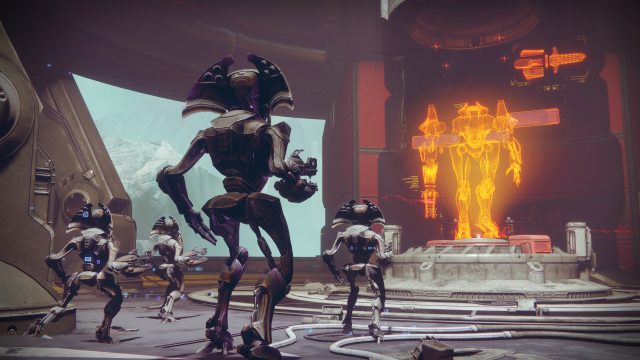
By now, you’ve probably heard word about how Destiny 2 has micro-transactions. It’s true, unfortunately, but don’t let that stop you from purchasing it, because it seems like more and more games have them these days. This isn’t the first, nor will it be the last, and it’s not like you actually need to spend real world money in order to be successful. Through time, effort and progression, you’ll be able to match those who’ve spent money, although they’ll fast track themselves by doing so. Yes, it’s a shitty practice and something that I hope people won’t support, but it’s not like it’s forced down our throats in any realistic way. It’s there for those who are lazy, and those who have money coming out their ears and don’t care to beat games themselves, but it’s very easy to avoid.
All of the above is wrapped up in a beautiful bow that is the game’s well above average presentation.
Simply put, the world of Destiny 2 is beautiful, making it a treat for the eyes at all times. Each planet is different, both in terms of its looks and its geography, and no two areas look the same as a result. While Earth has easily recognizable forests, roads, bridges and hills, other planets look completely different and use colour schemes that you wouldn’t normally think would work. Most of them are absolutely stunning, too, making exploring them as visually enjoyable as it is immersive in a gameplay sense. What’s also great is that the Xbox One version — which we were provided with for review purposes — runs very well, with almost no slowdown or screen tearing to report. I noticed a minor amount of slowdown during a crazy public event, but even then it wasn’t much.
Somehow, the audio is even better. Not only is the dialogue of high quality — especially when it comes to both Cayde-6 (Nathan Fillion) and the aforementioned AI, Failsafe — but the music is outstanding. Playing Destiny 2 with headphones (like the LS40s) on makes for a real treat, and the game’s audio team deserves a ton of credit for it all. I mean, the music is so good that it’s worth listening to by itself, which is rare for a shooter.
Alas, we’ve come to the end of the review, where I must but definitely don’t need to say how good Destiny 2 is. Although I wasn’t a huge fan of the first game, and mostly just focused on the campaign with it, this sequel has blown me away and made me appreciate the series much more than I ever did before. This is a big step up that offers lots of content and a ton of polish, all of which is sure to please both devoted returnees and newcomers alike. Sure, there may not be enough content for you to have something new to play each and every night, but there’s still lots here and more than enough to make regular sessions inviting and unique.
**This review is based on the Xbox One version, which we were provided with**

